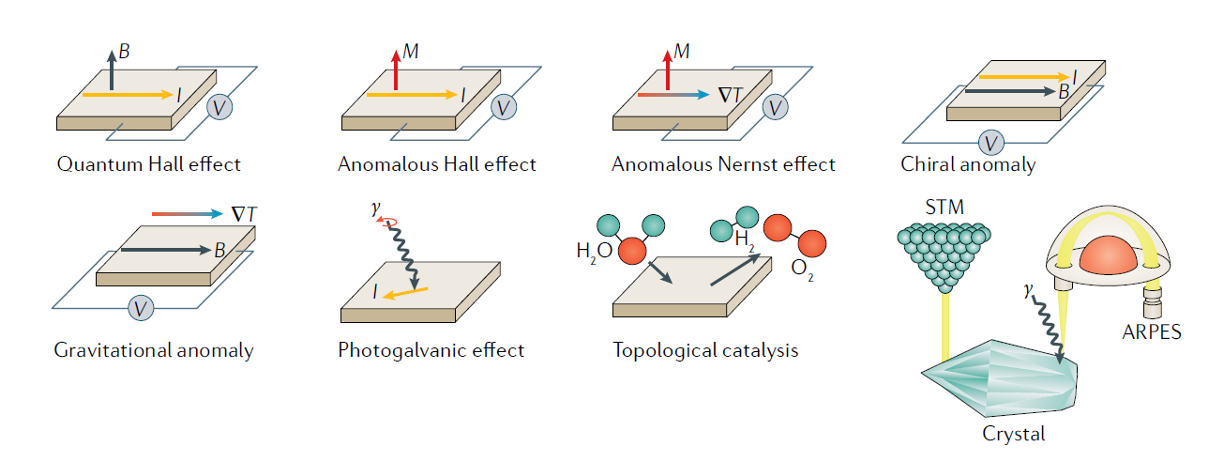Discovering topological materials from symmetry
Topological materials have special universal properties, which are protected against perturbations. The name comes from the fact that such properties are theoretically described by topology, a branch of mathematics concerned with the properties of geometrical objects that are unchanged by continuous deformations. Topological materials behave like an ordinary insulator in the bulk but have conducting states on their boundaries, i.e., edges or surfaces.
The conducting surface is not what makes topological materials unique, but the fact that this surface state is particularly robust. These robust boundary states and quantized bulk response coefficients as a consequence of the electronic wavefunctions. Because topological boundary states survive under moderate disorder and frequently exhibit spin polarization and spin-momentum locking, topological materials represent a promising possible platform for very interesting technological applications: storing and manipulating quantum information, realizing coherent spin transport or high- efficiency catalysis are some of them.
Topological materials’ discovery has evolved at a rapid pace over the past 15 years. Since the discovery of the first topological insulators, a large number of both insulating and (semi)metallic topological phases have been predicted, characterized and measured in experimentally accessible chemical compounds. This unprecedented pace of discovery has been driven by several major factors. From a theoretical perspective, the discovery of novel topological phases has been facilitated by the rapid development of topological invariants computable from band structures, and by the rediscovery and application of crystalline symmetry and group theory.
The growth of topological condensed matter physics can also be attributed to the major advances in cloud storage and large-scale computing that have enabled high-throughput calculations, and to dramatic improvements in communications that have enabled close, though remote collaboration between international teams of theorists and experimentalists.

Owing to the sheer volume of important discoveries made since the prediction of 2D topological insulators, an encyclopedic review of the state of the art is becoming almost impossible. Now, a team of researchers provides 1 a tome of that encyclopedia, the one devoted to the discovery and characterization of topology in the electronic structure of crystalline chemical compounds with weak interactions and negligible disorder. The researchers survey topological electronic materials discovery in nonmagnetic crystalline solids from the prediction of the first 2D and 3D topological insulators to the recently introduced methods that have facilitated large-scale searches for topological materials.
One important point the authors make is how the introduction of Topological Quantum Chemistry (TQC) in 2017 and related methods have changed the mindset of the topological materials community, shifting the focus in materials discovery from human intuition to algorithmic prediction, resulting in massive databases of stoichiometric topological materials.
In this vein, one of the future directions of research identified in this review is based on the extension in 2020 of TQC to crystals with commensurate magnetism to construct the theory of magnetic TQC. Magnetic TQC was most recently employed to perform a high-throughput search for magnetic topological materials, resulting in the identification of over 100 magnetic topological materials among the approximately 500 magnetic ones on the Bilbao Crystallographic Server with experimentally measured magnetic crystallographic space groups.
Author: César Tomé López is a science writer and the editor of Mapping Ignorance
Disclaimer: Parts of this article may be copied verbatim or almost verbatim from the referenced research paper/s.
References
- Benjamin J. Wieder, Barry Bradlyn, Jennifer Cano, Zhijun Wang, Maia G. Vergniory, Luis Elcoro, Alexey A. Soluyanov, Claudia Felser, Titus Neupert, Nicolas Regnault & B. Andrei Bernevig (2021) Topological materials discovery from crystal symmetry Nature Reviews Materials doi: 10.1038/s41578-021-00380-2 ↩